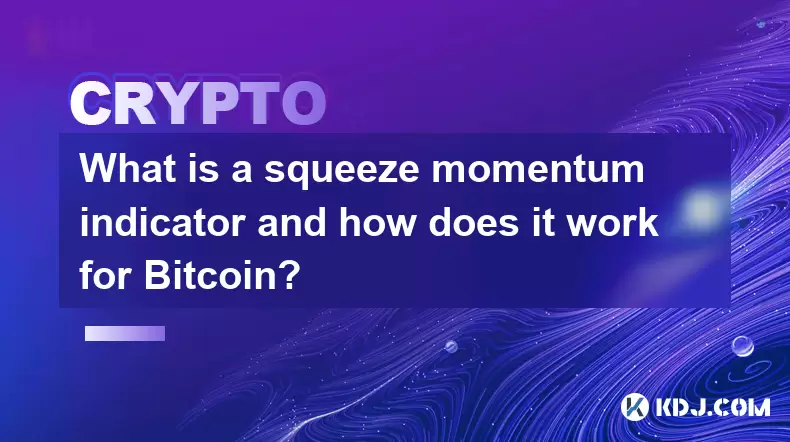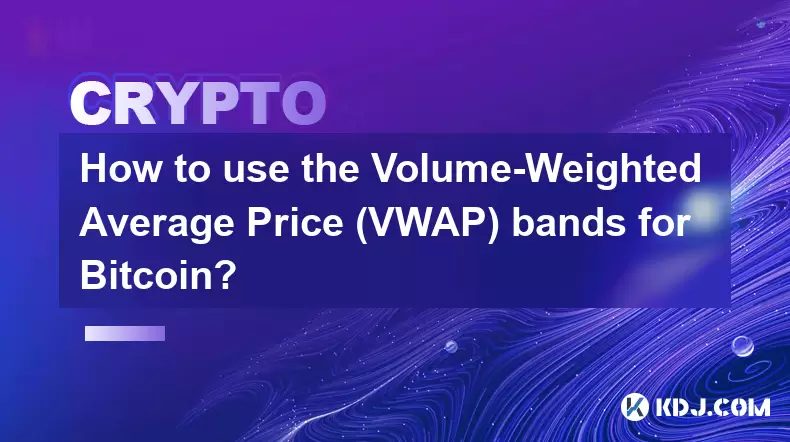-
 Bitcoin
Bitcoin $108,017.2353
-0.81% -
 Ethereum
Ethereum $2,512.4118
-1.58% -
 Tether USDt
Tether USDt $1.0002
-0.03% -
 XRP
XRP $2.2174
-1.03% -
 BNB
BNB $654.8304
-0.79% -
 Solana
Solana $147.9384
-1.76% -
 USDC
USDC $1.0000
-0.01% -
 TRON
TRON $0.2841
-0.76% -
 Dogecoin
Dogecoin $0.1636
-2.09% -
 Cardano
Cardano $0.5726
-1.72% -
 Hyperliquid
Hyperliquid $39.1934
1.09% -
 Sui
Sui $2.9091
-0.59% -
 Bitcoin Cash
Bitcoin Cash $482.1305
0.00% -
 Chainlink
Chainlink $13.1729
-1.54% -
 UNUS SED LEO
UNUS SED LEO $9.0243
-0.18% -
 Avalanche
Avalanche $17.8018
-1.90% -
 Stellar
Stellar $0.2363
-1.69% -
 Toncoin
Toncoin $2.7388
-3.03% -
 Shiba Inu
Shiba Inu $0.0...01141
-1.71% -
 Litecoin
Litecoin $86.3646
-1.98% -
 Hedera
Hedera $0.1546
-0.80% -
 Monero
Monero $311.8554
-1.96% -
 Dai
Dai $1.0000
-0.01% -
 Polkadot
Polkadot $3.3473
-2.69% -
 Ethena USDe
Ethena USDe $1.0001
-0.01% -
 Bitget Token
Bitget Token $4.3982
-1.56% -
 Uniswap
Uniswap $6.9541
-5.35% -
 Aave
Aave $271.7716
0.96% -
 Pepe
Pepe $0.0...09662
-1.44% -
 Pi
Pi $0.4609
-4.93%
How to do Bitcoin quantitative trading? What are the common strategies?
Bitcoin quantitative trading uses algorithms and data analysis to trade cryptocurrencies, employing strategies like trend following, mean reversion, and arbitrage for profit.
May 09, 2025 at 04:21 am

How to do Bitcoin quantitative trading? What are the common strategies?
Bitcoin quantitative trading involves using mathematical models and algorithms to make trading decisions in the cryptocurrency market. This approach leverages data analysis, statistical methods, and automated systems to execute trades, aiming to maximize profits while minimizing risks. In this article, we will explore the steps to engage in Bitcoin quantitative trading and delve into some of the most common strategies employed by traders.
Setting Up for Bitcoin Quantitative Trading
Before diving into Bitcoin quantitative trading, you need to set up the necessary tools and infrastructure. Here's how you can prepare:
Choose a reliable trading platform: Select a platform that supports API access for automated trading. Popular choices include Binance, Coinbase Pro, and Kraken. Ensure the platform has sufficient liquidity and a good reputation for uptime and security.
Set up a trading account: Register on your chosen platform, complete the necessary verification steps, and fund your account. Ensure you comply with all regulatory requirements in your jurisdiction.
Develop or acquire trading algorithms: You can either develop your own trading algorithms or purchase them from third-party providers. If you choose to develop your own, you'll need proficiency in programming languages like Python, along with libraries such as Pandas, NumPy, and scikit-learn for data analysis.
Backtesting and paper trading: Before deploying your algorithms in the live market, backtest them using historical data to evaluate their performance. Many platforms offer paper trading environments where you can test your strategies without risking real money.
Risk management: Implement robust risk management protocols to protect your capital. This includes setting stop-loss orders, diversifying your portfolio, and limiting the size of individual trades.
Common Strategies in Bitcoin Quantitative Trading
Several strategies are commonly used in Bitcoin quantitative trading. Let's explore some of the most prevalent ones:
Trend Following Strategy
The trend following strategy aims to capitalize on the momentum of Bitcoin's price movements. Here's how it works:
Identify trends: Use technical indicators such as moving averages, the Relative Strength Index (RSI), and the Moving Average Convergence Divergence (MACD) to identify upward or downward trends in Bitcoin's price.
Enter and exit trades: Buy Bitcoin when the indicators suggest an uptrend and sell or short when they indicate a downtrend. The goal is to ride the trend until it reverses.
Example: If the 50-day moving average crosses above the 200-day moving average, it might signal a bullish trend, prompting a buy order. Conversely, a bearish crossover might trigger a sell order.
Mean Reversion Strategy
Mean reversion strategies are based on the idea that Bitcoin's price will eventually return to its historical average. Here's how to implement this strategy:
Calculate the mean: Determine the historical average price of Bitcoin over a specific period, such as 30 days or 60 days.
Identify deviations: Look for instances where Bitcoin's price deviates significantly from its mean. A common approach is to use standard deviations to set thresholds for overbought and oversold conditions.
Trade on reversion: Buy Bitcoin when it is significantly below its mean (oversold) and sell when it is significantly above its mean (overbought). The expectation is that the price will revert to its mean over time.
Example: If Bitcoin's price drops to two standard deviations below its 30-day moving average, it might be considered oversold, prompting a buy order. Conversely, if it rises to two standard deviations above the mean, it might be considered overbought, triggering a sell order.
Arbitrage Strategy
Arbitrage involves exploiting price differences for Bitcoin across different exchanges. Here's how to execute this strategy:
Monitor multiple exchanges: Use APIs to track Bitcoin's price on various exchanges in real-time.
Identify price discrepancies: Look for instances where Bitcoin's price on one exchange is significantly higher or lower than on another.
Execute trades: Buy Bitcoin on the exchange where it is cheaper and sell it on the exchange where it is more expensive. The difference in price is your profit, minus transaction fees.
Example: If Bitcoin is trading at $30,000 on Exchange A and $30,100 on Exchange B, you could buy on Exchange A and sell on Exchange B, earning a $100 profit per Bitcoin traded, minus fees.
Market Making Strategy
Market making involves providing liquidity to the market by placing buy and sell orders at different price levels. Here's how to implement this strategy:
Set bid and ask prices: Place buy orders (bids) slightly below the current market price and sell orders (asks) slightly above it.
Profit from the spread: The difference between the bid and ask prices is the spread, which is your profit when trades are executed.
Adjust orders: Continuously adjust your orders based on market conditions to maintain liquidity and capture profits.
Example: If Bitcoin is trading at $30,000, you might place a bid at $29,950 and an ask at $30,050. When your bid is filled, you buy at $29,950, and when your ask is filled, you sell at $30,050, earning a $50 profit per Bitcoin traded.
Sentiment Analysis Strategy
Sentiment analysis involves using natural language processing (NLP) to gauge market sentiment from social media, news articles, and other sources. Here's how to implement this strategy:
Collect data: Use APIs to gather data from platforms like Twitter, Reddit, and news websites.
Analyze sentiment: Apply NLP techniques to classify the sentiment as positive, negative, or neutral. Tools like TextBlob or VADER can be used for this purpose.
Make trading decisions: Buy Bitcoin when sentiment is overwhelmingly positive and sell when it is overwhelmingly negative. The idea is that market sentiment can influence price movements.
Example: If sentiment analysis indicates a surge in positive mentions of Bitcoin on social media, it might signal an upcoming price increase, prompting a buy order. Conversely, a surge in negative sentiment might suggest a price drop, triggering a sell order.
Frequently Asked Questions
Q: Can I use machine learning for Bitcoin quantitative trading?
A: Yes, machine learning can be used to enhance Bitcoin quantitative trading strategies. Techniques such as supervised learning, unsupervised learning, and reinforcement learning can be applied to predict price movements, optimize trading algorithms, and improve risk management. For instance, you can train a model to predict Bitcoin's price based on historical data and various market indicators.
Q: How important is risk management in Bitcoin quantitative trading?
A: Risk management is crucial in Bitcoin quantitative trading. The cryptocurrency market is highly volatile, and without proper risk management, you could face significant losses. Implementing stop-loss orders, diversifying your portfolio, and limiting the size of individual trades are essential practices to protect your capital.
Q: Are there any regulatory considerations for Bitcoin quantitative trading?
A: Yes, regulatory considerations vary by jurisdiction. It's important to comply with local regulations regarding cryptocurrency trading, including Know Your Customer (KYC) and Anti-Money Laundering (AML) requirements. Additionally, some countries have specific rules about automated trading and the use of algorithms, so it's essential to stay informed about the legal landscape in your area.
Q: How can I evaluate the performance of my Bitcoin quantitative trading strategies?
A: To evaluate the performance of your Bitcoin quantitative trading strategies, you can use several metrics such as the Sharpe ratio, the Sortino ratio, and the maximum drawdown. Backtesting your strategies using historical data can provide insights into their potential performance. Additionally, monitoring real-time performance and adjusting your strategies based on results can help optimize your trading approach.
Disclaimer:info@kdj.com
The information provided is not trading advice. kdj.com does not assume any responsibility for any investments made based on the information provided in this article. Cryptocurrencies are highly volatile and it is highly recommended that you invest with caution after thorough research!
If you believe that the content used on this website infringes your copyright, please contact us immediately (info@kdj.com) and we will delete it promptly.
- Cryptos in July 2025: Massive Gains or Just Hype?
- 2025-07-05 20:30:13
- Pepe's EVM Layer 2 Meme Coin Mania: What's the Hype?
- 2025-07-05 20:50:12
- Shiba Inu, Dogecoin, and the Crypto Skyrocket: What's Making These Memes Soar?
- 2025-07-05 21:10:12
- Tokenized Stocks: Robinhood, Gemini, and the NYSE Threat
- 2025-07-05 21:10:12
- Altcoin Adventures: Navigating the Pepe Fork Frenzy and Solana's Summer Swings
- 2025-07-05 21:15:12
- Hong Kong's Tokenised Bond Leap: Zero Stamp Duty Sparks Web3 Ambitions
- 2025-07-05 20:30:13
Related knowledge

What is the Woodies CCI indicator and can it be used for Bitcoin?
Jul 04,2025 at 05:14pm
Understanding the Woodies CCI IndicatorThe Woodies CCI indicator is a variation of the traditional Commodity Channel Index (CCI), which was originally developed by Donald Lambert. The standard CCI measures the current price level relative to an average price over a given period, typically 14. However, the Woodies version modifies this calculation to mak...

How to use indicators to trade the opening range breakout for Bitcoin CME futures?
Jul 05,2025 at 07:35pm
What Is the Opening Range Breakout Strategy?The opening range breakout (ORB) strategy is a popular trading technique used in both traditional markets and cryptocurrency futures, particularly for Bitcoin on the CME. This method involves identifying a specific price range formed during the early phase of a trading session and then taking positions when th...

What does a bearish cross on the Stochastic RSI mean for Bitcoin?
Jul 05,2025 at 07:18pm
Understanding the Stochastic RSI IndicatorThe Stochastic RSI (Relative Strength Index) is a momentum oscillator used in technical analysis to identify overbought or oversold conditions in an asset's price. It combines two well-known indicators — the RSI and the Stochastic Oscillator — to provide more nuanced signals than either could alone. The Stochast...

How to set alerts for moving average crosses on a Bitcoin chart?
Jul 05,2025 at 09:21pm
Understanding Moving Average Crosses in Bitcoin TradingMoving average crosses are one of the most commonly used technical indicators among cryptocurrency traders. In the context of Bitcoin, these signals help identify potential trend reversals or confirm ongoing trends. A moving average cross occurs when a short-term moving average (e.g., 9-day EMA) int...

What is a squeeze momentum indicator and how does it work for Bitcoin?
Jul 05,2025 at 07:32pm
Understanding the Squeeze Momentum IndicatorThe Squeeze Momentum Indicator is a technical analysis tool used by traders to identify potential breakout opportunities in financial markets, including cryptocurrencies like Bitcoin. It was developed by John Carter and is widely used among active traders who seek to capture volatility expansions after periods...

How to use the Volume-Weighted Average Price (VWAP) bands for Bitcoin?
Jul 04,2025 at 04:28pm
Understanding the Basics of VWAP BandsThe Volume-Weighted Average Price (VWAP) is a key metric used in trading to determine the average price at which an asset, such as Bitcoin, has traded throughout the day. It takes into account both volume and price, making it more reliable than a simple moving average. VWAP bands are essentially standard deviation c...

What is the Woodies CCI indicator and can it be used for Bitcoin?
Jul 04,2025 at 05:14pm
Understanding the Woodies CCI IndicatorThe Woodies CCI indicator is a variation of the traditional Commodity Channel Index (CCI), which was originally developed by Donald Lambert. The standard CCI measures the current price level relative to an average price over a given period, typically 14. However, the Woodies version modifies this calculation to mak...

How to use indicators to trade the opening range breakout for Bitcoin CME futures?
Jul 05,2025 at 07:35pm
What Is the Opening Range Breakout Strategy?The opening range breakout (ORB) strategy is a popular trading technique used in both traditional markets and cryptocurrency futures, particularly for Bitcoin on the CME. This method involves identifying a specific price range formed during the early phase of a trading session and then taking positions when th...

What does a bearish cross on the Stochastic RSI mean for Bitcoin?
Jul 05,2025 at 07:18pm
Understanding the Stochastic RSI IndicatorThe Stochastic RSI (Relative Strength Index) is a momentum oscillator used in technical analysis to identify overbought or oversold conditions in an asset's price. It combines two well-known indicators — the RSI and the Stochastic Oscillator — to provide more nuanced signals than either could alone. The Stochast...

How to set alerts for moving average crosses on a Bitcoin chart?
Jul 05,2025 at 09:21pm
Understanding Moving Average Crosses in Bitcoin TradingMoving average crosses are one of the most commonly used technical indicators among cryptocurrency traders. In the context of Bitcoin, these signals help identify potential trend reversals or confirm ongoing trends. A moving average cross occurs when a short-term moving average (e.g., 9-day EMA) int...

What is a squeeze momentum indicator and how does it work for Bitcoin?
Jul 05,2025 at 07:32pm
Understanding the Squeeze Momentum IndicatorThe Squeeze Momentum Indicator is a technical analysis tool used by traders to identify potential breakout opportunities in financial markets, including cryptocurrencies like Bitcoin. It was developed by John Carter and is widely used among active traders who seek to capture volatility expansions after periods...

How to use the Volume-Weighted Average Price (VWAP) bands for Bitcoin?
Jul 04,2025 at 04:28pm
Understanding the Basics of VWAP BandsThe Volume-Weighted Average Price (VWAP) is a key metric used in trading to determine the average price at which an asset, such as Bitcoin, has traded throughout the day. It takes into account both volume and price, making it more reliable than a simple moving average. VWAP bands are essentially standard deviation c...
See all articles

























































































